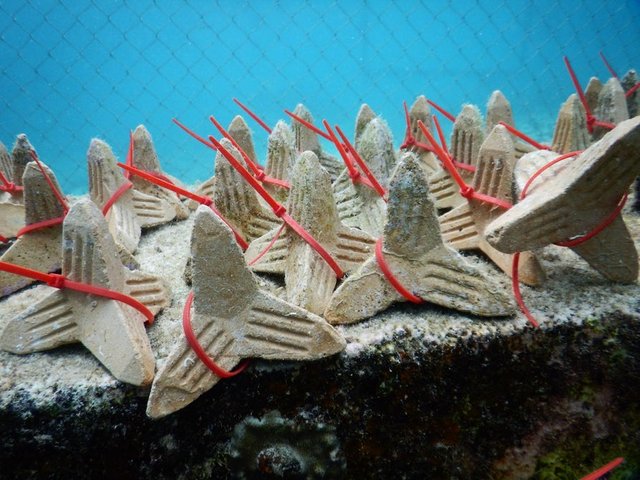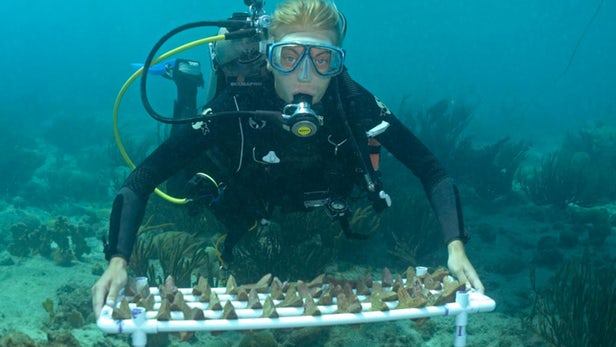unveiling nature


Typically, when conservationists are trying to restore dead or dying coral reefs, they do so by manually fastening fragments of live coral to the existing reef. It's a painstaking and time-consuming process. Thanks to new technology developed by marine ecology group SECORE International, however, reef restoration may soon be as quick and easy as sowing seeds in a garden.
As part of a pilot project taking place in Curaçao, researchers started by collecting larvae released by colonies of golf ball corals (Favia fragum) at a local reef. In a lab, these larvae were then settled onto small tetrapod-shaped concrete structures. A few weeks later, after the settled larvae had developed into coral polyps on the concrete, the structures were introduced to the reef simply by hand-wedging them into existing crevices.
One year later, over half of the planted "seeding units" still had at least one coral growing on them. This number would likely be higher if algae growing on the structures' sunlit surfaces hadn't outcompeted the polyps. To that end, the scientists believe that they might have better luck with seeding units made from a less porous material such as glass or glazed ceramics.